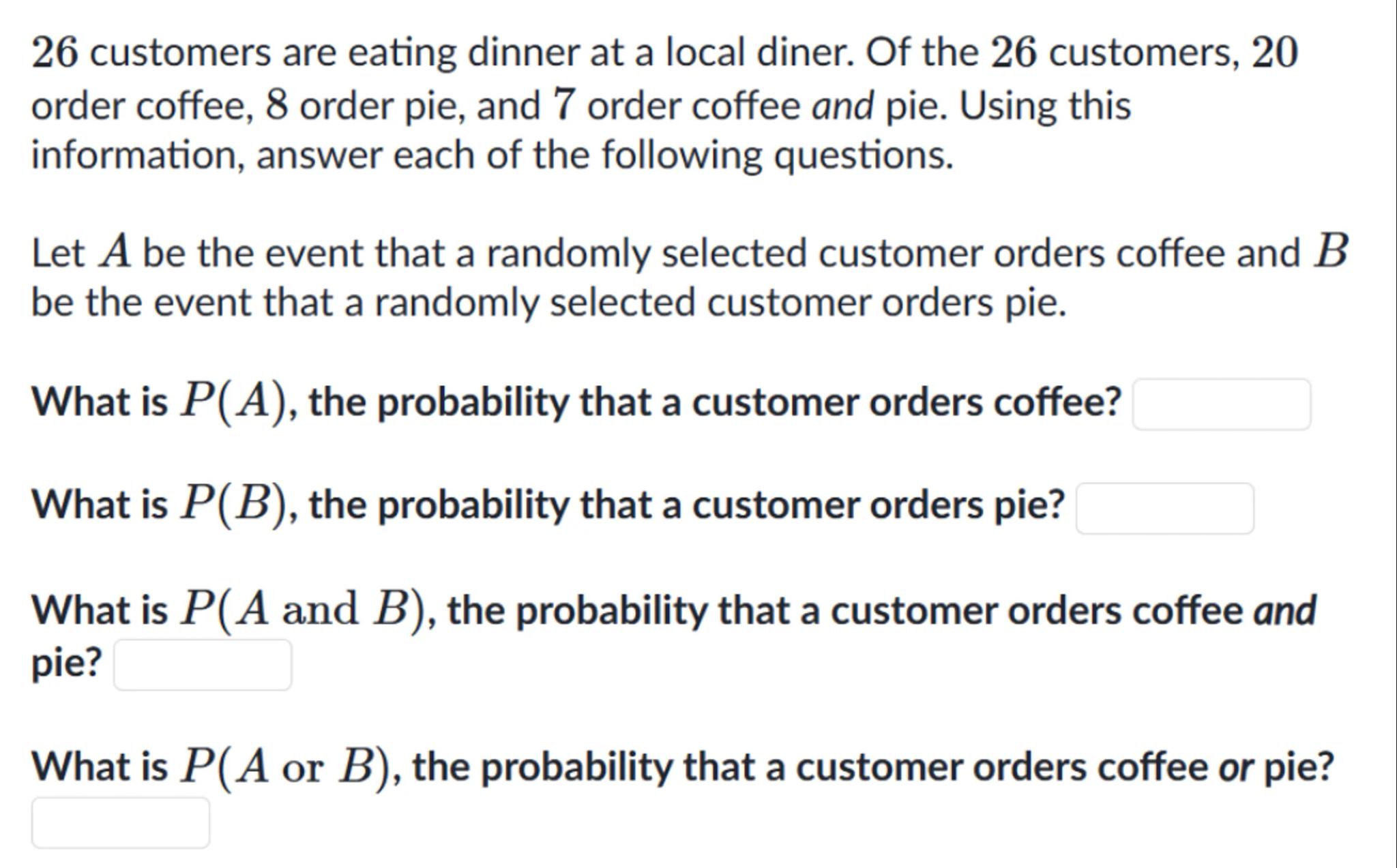
Sia

Question
Math
Posted 10 months ago
26 customers are eating dinner at a local diner. Of the 26 customers, 20 order coffee, 8 order pie, and 7 order coffee and pie. Using this information, answer each of the following questions.
Let be the event that a randomly selected customer orders coffee and be the event that a randomly selected customer orders pie.
What is , the probability that a customer orders coffee?
What is , the probability that a customer orders pie?
What is and , the probability that a customer orders coffee and pie?
What is or , the probability that a customer orders coffee or pie?

Answer from Sia
Posted 10 months ago
Solution by Steps
step 1
Calculate , the probability of a customer ordering coffee
step 2
From the asksia-ll calculation list, . Simplify the fraction to its irreducible form
step 3
Simplifying gives
step 4
Convert the probability to a percentage:
[question 1] Answer
or
Key Concept
Probability of a single event
Explanation
The probability of an event is the number of favorable outcomes divided by the total number of possible outcomes.
step 1
Calculate , the probability of a customer ordering pie
step 2
From the asksia-ll calculation list, . Simplify the fraction to its irreducible form
step 3
Simplifying gives
step 4
Convert the probability to a percentage:
[question 2] Answer
or
Key Concept
Probability of a single event
Explanation
The probability of an event is the number of favorable outcomes divided by the total number of possible outcomes.
step 1
Calculate and , the probability of a customer ordering both coffee and pie
step 2
From the asksia-ll calculation list, and . This fraction is already in its simplest form
step 3
The probability is given directly: and
[question 3] Answer
and
Key Concept
Probability of the intersection of two events
Explanation
The probability of the intersection of two events is the number of outcomes where both events occur divided by the total number of possible outcomes.
step 1
Calculate or , the probability of a customer ordering coffee or pie
step 2
Use the formula or and
step 3
Substitute the known probabilities into the formula: or
step 4
Find a common denominator and simplify the expression
step 5
Simplifying gives or
[question 4] Answer
or
Key Concept
Probability of the union of two events
Explanation
The probability of the union of two events is found by adding the probabilities of each event and subtracting the probability of their intersection.
Not the question you are looking for? Ask here!
Enter question by text
Enter question by image
Unlock Smarter Learning with AskSia Super!
Join Super, our all-in-one AI solution that can greatly improve your learning efficiency.
30% higher accuracy than GPT-4o
Entire learning journey support
The most student-friendly features
Study Other Question